
Tag Archives veterinary medicine

Understanding the new drug regulations
Vet Advice with Dr. Ron Clarke
New regulations governing the purchase and use of antimicrobials (antibiotics) necessitate time spent between veterinarians and producers. Everyone has an opinion. Phrases like “prudent use,” “veterinary-client-patient-relationships,” “veterinary-pharmaceutical stewardship,” “veterinary oversight,” and “documented evidence” pepper the pages of government, academic and veterinary documents issued around antimicrobial use. There is a new vocabulary to be learned, the […] Read more
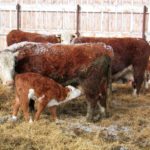
Factors that hinder calf immunity
Calving Health with Heather Smith Thomas
Illness occurs when an animal’s body is overwhelmed by infection. A healthy animal with strong immunity is less likely to become sick than an animal with poor immunity. Immunity refers to the body’s ability to fight off pathogens, and this ability is developed in a complex process in which the body creates specific weapons for […] Read more
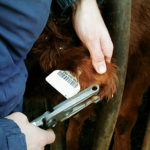
BVD testing in cattle
How cattle can be exposed and what measures to take if they test positive
BVD (bovine viral diarrhea) virus is a tricky pathogen that can affect cattle in different ways. It can cause abortion, mummification of a fetus, birth defects, stillborn full-term calves, normal-looking calves with immune deficiencies, and acute or chronic illness. BVD is an indirect cause of many other types of disease because it has adverse effects […] Read more
BVD screening and control program in Saskatchewan
Cattle producers urged to learn more about testing
Dr. Wendy Wilkins, disease surveillance veterinarian with the Saskatchewan Ministry of Agriculture, administers the provincial BVD screening and control program. “Here in Saskatchewan this program provides free testing for producers who are looking for PI calves within their herd. We don’t do whole-herd screening but we do offer testing for any dead, deformed, aborted or […] Read more

New drug regulations require adjustment
Vet Advice with Dr. Ron Clarke
No issue over the past 15 years occupied more space in agriculture, veterinary or public health-related press than antimicrobial resistance (AMR). No single topic appears more often on conference and seminar agendas than topics addressing the use, abuse and prudent use of antimicrobials in humans and animals. Petitions, a plethora of committees of every description, […] Read more
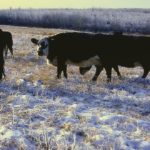
Peritonitis in cows and its causes
Health: In acute cases, a post mortem is critical to help determine the cause
Peritonitis refers to the inflammation or infection around the peritoneum which is the inside lining of the abdomen. Any infection involving the abdomen receives the nondescript description of peritonitis. This could be an infection around the intestines, stomachs, liver or uterus in cows and heifers. What is most important here is there are many causes […] Read more

Sweet clover poisoning — an old problem persists
Vet Advice with Dr. Ron Clarke
Mouldy sweet clover poisoning in cattle is caused by the ingestion of sweet clover hay or ensilage containing dicoumarol. Poisoning is characterized by extensive hemorrhages into tissues throughout the body and severe blood loss after injury, surgery or parturition. Coumarol, a normal constituent of many sweet clover cultivars, is converted to dicoumarol through the action […] Read more
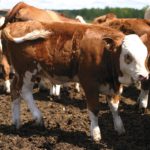
BRSV (bovine respiratory syncytial virus) is a deadly viral cause of pneumonia
Health: Know the signs and what actions you should take if you suspect the virus
I am sure most cattlemen have had the odd diagnosis of BRSV in their herds over the years, either individual animals or outbreaks, generally in cattle under one year of age. BRSV is suspected with pneumonias that do not respond to antibiotics or produce lots of fluids and frothing as well as runny eyes. Temperatures […] Read more
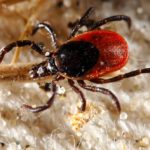
Ticks join new world order in infectious disease
Though only two varieties exist, they are responsible for a wide range of diseases
By scientific estimate, ticks have been around for 100 million years. They represent the most famous blood-sucking arachnids, (eight-legged organisms). The world is now in unchartered territory when it comes to infectious diseases. Over the past century, the number of new infectious diseases cropping up each year has nearly quadrupled. The number of outbreaks per […] Read more

Watch for urinary stones
Animal Health: Urinary blockages can be more common in early-castrated steers than bulls
Occasionally cattle suffer from kidney stones or bladder stones, just like humans. These are called urinary calculi, and are mineralized clumps in the urinary tract. In cattle, bladder stones are more common than kidney stones. Small ones usually pass out with urine and are not a problem, but sometimes stones become caught and create a […] Read more



